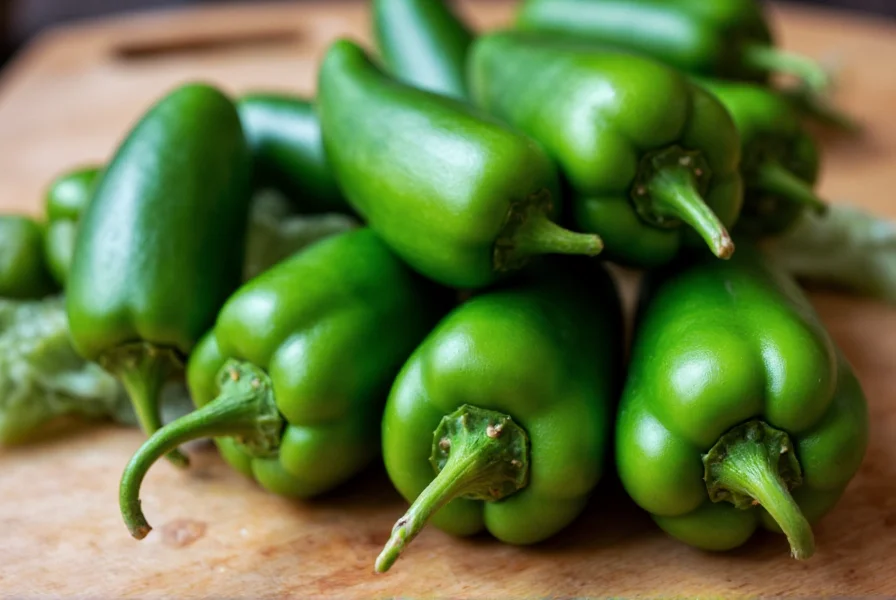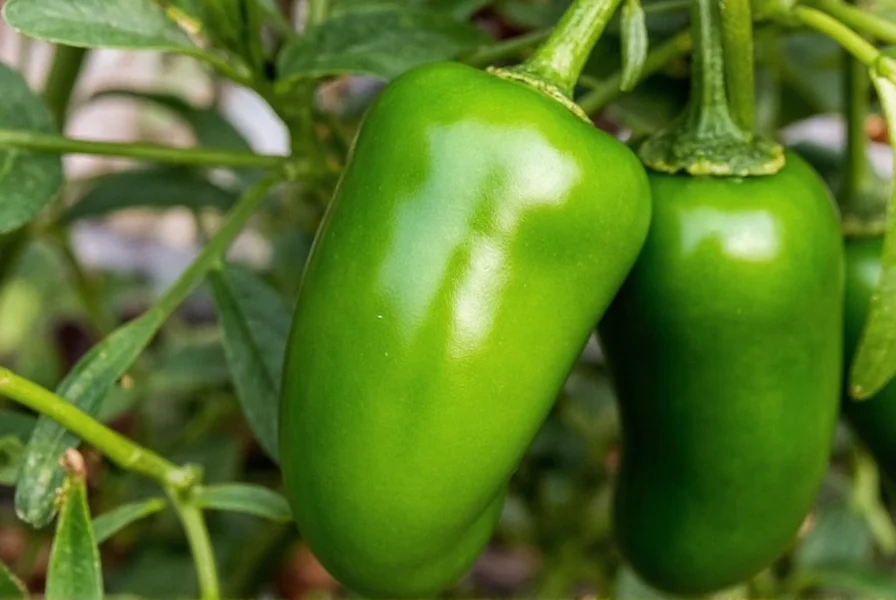The poblano pepper stands as one of Mexico's most versatile culinary treasures. This heart-shaped chili typically measures 4-6 inches in length with a deep, glossy green color when immature. As it matures, it transitions to a rich, dark red or brown hue. Unlike many of its fiery relatives, the poblano delivers a mild heat experience that makes it accessible to a wide range of palates while still providing distinctive flavor complexity.
Physical Characteristics of Poblano Peppers
Poblanos have a distinctive appearance that sets them apart from other chili varieties. They feature a broad, heart-shaped body with thick walls that make them ideal for stuffing. The skin is relatively smooth compared to some wrinkled chili varieties, though it may develop slight ridges as the pepper matures. When selecting fresh poblanos, look for firm, glossy specimens without wrinkles or soft spots, which indicate aging.

Heat Level and Flavor Profile
Understanding what is poblano chili heat level is essential for home cooks. On the Scoville scale, poblanos register between 1,000-2,000 units, placing them firmly in the mild category. For comparison, jalapeños range from 2,500-8,000 units, making poblanos noticeably less spicy. The flavor profile features earthy, almost smoky notes with subtle fruitiness. When roasted, poblanos develop a deeper, more complex flavor that enhances many dishes.
| Pepper Variety | Scoville Heat Units | Flavor Profile | Common Culinary Uses |
|---|---|---|---|
| Poblano | 1,000-2,000 | Earthy, mild, slightly sweet | Chiles rellenos, mole, stuffing |
| Jalapeño | 2,500-8,000 | Grassy, bright, moderately spicy | Salsas, nachos, pickled |
| Anaheim | 500-2,500 | Mild, slightly tangy | Stuffed peppers, roasts |
| Serrano | 10,000-23,000 | Sharp, bright, hot | Salsas, guacamole, hot sauces |
Poblano vs Jalapeño: Understanding the Difference
Many home cooks wonder about the poblano vs jalapeno difference when planning recipes. While both are green chili peppers commonly found in Mexican cuisine, they differ significantly. Poblanos are larger (4-6 inches versus 2-3 inches), milder in heat, and have thicker walls ideal for stuffing. Jalapeños pack more heat and have a brighter, grassier flavor. Substituting one for the other requires adjusting quantities based on desired heat level.
Culinary Applications of Poblano Peppers
The culinary versatility of poblano peppers explains their prominence in Mexican cooking. Their thick walls and mild heat make them perfect for stuffing, as in the classic chiles rellenos dish. When roasted and peeled, they add depth to sauces like mole poblano. Diced poblanos enhance scrambled eggs, casseroles, and soups without overwhelming other flavors. One distinctive characteristic is how poblano peppers change when dried—they transform into ancho chilies, which have a sweeter, fruitier flavor profile used in many traditional sauces.
Growing and Availability
Poblano peppers grow best in warm climates with long growing seasons. They require 65-80 days to reach maturity from transplanting. While originally from Puebla, Mexico (which gives them their name), they're now cultivated throughout the Americas. In grocery stores, fresh poblanos are typically available year-round in regions with significant Mexican populations, though peak season runs from late summer through fall. When fresh poblanos aren't available, many cooks seek to understand what is dried poblano called (ancho chili) as an alternative.
Nutritional Benefits
Beyond their culinary value, poblanos offer impressive nutritional benefits. They're an excellent source of vitamin C (providing more than 100% of the daily value per pepper), vitamin B6, and dietary fiber. They also contain vitamin A precursors, potassium, and antioxidants like capsaicin (though in milder amounts than hotter peppers). The capsaicin present still offers potential metabolic benefits without the intense heat that might bother sensitive individuals.
Preparation and Storage Tips
Proper preparation enhances the poblano experience. For many recipes, especially chiles rellenos, roasting and peeling is essential to remove the tough outer skin. This can be done over an open flame, under a broiler, or on a grill until the skin blackens, then placing in a covered bowl to steam before peeling. Fresh poblanos store well in the refrigerator's crisper drawer for 1-2 weeks. For longer storage, roast, peel, and freeze them in airtight containers where they'll maintain quality for 6-8 months.
Substitution Options
When wondering what to use instead of poblano pepper, consider these alternatives based on your recipe's needs. For stuffing applications, Anaheim peppers offer similar size and mild heat. Bell peppers work when heat isn't required but will lack the distinctive poblano flavor. For dried applications, ancho chili powder can substitute for dried poblanos. Understanding poblano pepper substitutes ensures your dishes maintain integrity even when your first choice isn't available.
Frequently Asked Questions
What is the difference between a poblano and ancho chili?
A poblano is the fresh form of the pepper, while an ancho is the dried version. When poblano peppers mature to red and are dried, they become anchos, which have a sweeter, fruitier flavor with raisin-like notes compared to the earthier fresh poblano.
How hot is a poblano pepper compared to other common chilies?
Poblanos measure 1,000-2,000 on the Scoville scale, making them milder than jalapeños (2,500-8,000 units) but slightly hotter than banana peppers (0-500 units). They're considered mild to medium heat, with most people able to enjoy them without significant burning sensation.
Can you eat poblano peppers raw?
Yes, you can eat poblano peppers raw, though they're more commonly roasted and peeled first. Raw poblanos have a slightly bitter, grassy flavor that mellows significantly when cooked. The thick skin can be tough when raw, which is why many recipes call for roasting to improve texture.
What are the best dishes to use poblano peppers in?
Poblanos excel in chiles rellenos (stuffed peppers), mole poblano sauce, roasted pepper salads, soups, and casseroles. Their mild heat and thick walls make them ideal for stuffing, while their earthy flavor enhances sauces and stews without overwhelming other ingredients.











 浙公网安备
33010002000092号
浙公网安备
33010002000092号 浙B2-20120091-4
浙B2-20120091-4